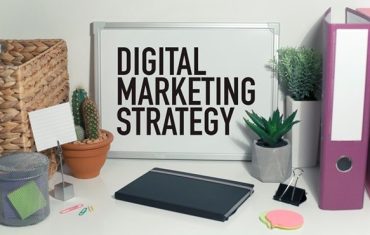While online sales might count for a fraction of your total sales, the influence the internet wields in consumer purchase decisions is too powerful to ignore. Regardless of whether they buy online or in-store, consumers are going online to be inspired, to do research and to ultimately make a purchase decision.
The latest Salmat marketing report found that three of the top five channels that consumers use to inform their purchase decisions are online. Search leads the pack―and ranks higher than recommendations from friends and family―with 49 per cent of consumers using it.
Brand websites rank fourth behind TV ads, and online consumer reviews rank fifth. Even when shopping in-store, the majority of consumers will always or often go online to research product information (56 per cent), compare prices and find the best deal (57 per cent).
The data confirms the importance of investing in your online assets, but not all online channels are equally influential. Here are the four areas you should focus your investment to ensure maximum impact.
Your website
Your website is the main online asset to invest in, as it is the centrepiece for the other online channels to connect to. Beyond the basics, there are a few ‘bells and whistle’ features to consider that will help drive conversions.
Firstly, let’s look at deliveries and returns. While we think of it as the last mile, consumers are actually looking at delivery and return options to inform their purchase decisions. Two-thirds (63 per cent) of consumers will always or often search for retailers that offer free delivery, while two in five (41 per cent) will search for retailers offering free returns.
Free deliveries and returns are proven to increase sales. When Australia Post launched their free delivery subscription service Shipster, merchants saw a 91 per cent increase in online spend during early trials. Research found that free returns lead to a 13 per cent increase in basket size, a 13 per cent increase in order frequency and a 26 per cent increase in overall spend.
Another regular hurdle in online sales has been payments. For consumers, different payment options are the most important thing they look for after free delivery. Research by Salmat and ACRS found that PayPal is used regularly by half (50 per cent) of Australians, and buy-now-pay-later offers such as Afterpay are growing quickly with 11 per cent of consumers saying they use them regularly. Therefore, it really does pay off to offer a wide range of payment options at checkout.
Search
After spending time investing in the development of your website, it’s time to ensure your crown jewel can be found in the sprawling mess of the internet.
Search is a key driver of website traffic, but for some reason, Australian marketers are under-investing in this channel. Our research found that despite Search being the most popular channel for consumers when making purchase decisions, only one-quarter of marketers are investing in it―28 per cent for SEO and 25 per cent for SEM.
Developing an SEO and SEM strategy is vital for attracting quality traffic to your site and helping you recoup the investment you’ve made here.
Voice
While Search is firmly part of the path to purchase today, voice is set to be the new Search in years to come. In fact, Gartner predicts that by 2020, 30 per cent of web browsing sessions will be done without a screen.
Two in five consumers either already own an in-home voice assistant (10 per cent) or are considering buying one in the future (32 per cent). Of these, over half (55 per cent) said they were interested in using this technology to shop. Such strong interest in an emerging technology demonstrates how important voice will be in the marketing mix moving forward.
There are already a number of voice innovations that marketers can use to reach early adopters and begin developing their voice strategy. For example, Lasoo List is a voice activated experience available through The Google Assistant. It enables consumers to create and manage their shopping lists using their voice. The Google Assistant then uses online catalogue data to find and present users with the best deals for items on their shopping list.
By experimenting with voice now, brands can start to develop their voice strategy and capabilities to ensure they are in a good position when voice becomes mainstream.
Online reviews
Almost a half (47 per cent) of consumers said that when they are shopping in-store, they go online to check consumer reviews about products before buying. While online reviews aren’t something that a brand can or should control, they are something that can be encouraged.
Marketers have two options for leveraging online reviews: they can publish reviews on their company website using third party integrations such as TrustPilot or Bazaarvoice, or off-site using a platform like Google Seller Ratings or Yelp.
Reviews on your website typically lead to higher engagement from potential customers through longer web sessions, more page visits and, consequently, a lower bounce rate. Including reviews such as ‘rich snippets’ in your search engine listings leads to higher click through rates and higher traffic.
Google also prioritises web listings with higher click through rates and lower bounce rates, contributing to a higher quality score―this can potentially lower advertising costs. Finally, website reviews can improve conversions and lower the rate of abandoned carts, especially if customers are comparing against other brands’ products.
Now that consumers carry the internet around with them wherever they go, your online presence is hugely important in reaching and converting customers. To ensure you are investing in the areas that will deliver the best return, it is important to start with a clear picture of your customers’ path to purchase and the influential touch points along the way. By investing in your website, search, voice and online reviews, you can have significant influence on your customers’ buying journey and guarantee more customers complete that journey, ultimately leading to a purchase.
Karen Lewis, head of digital and e-commerce at Salmat







